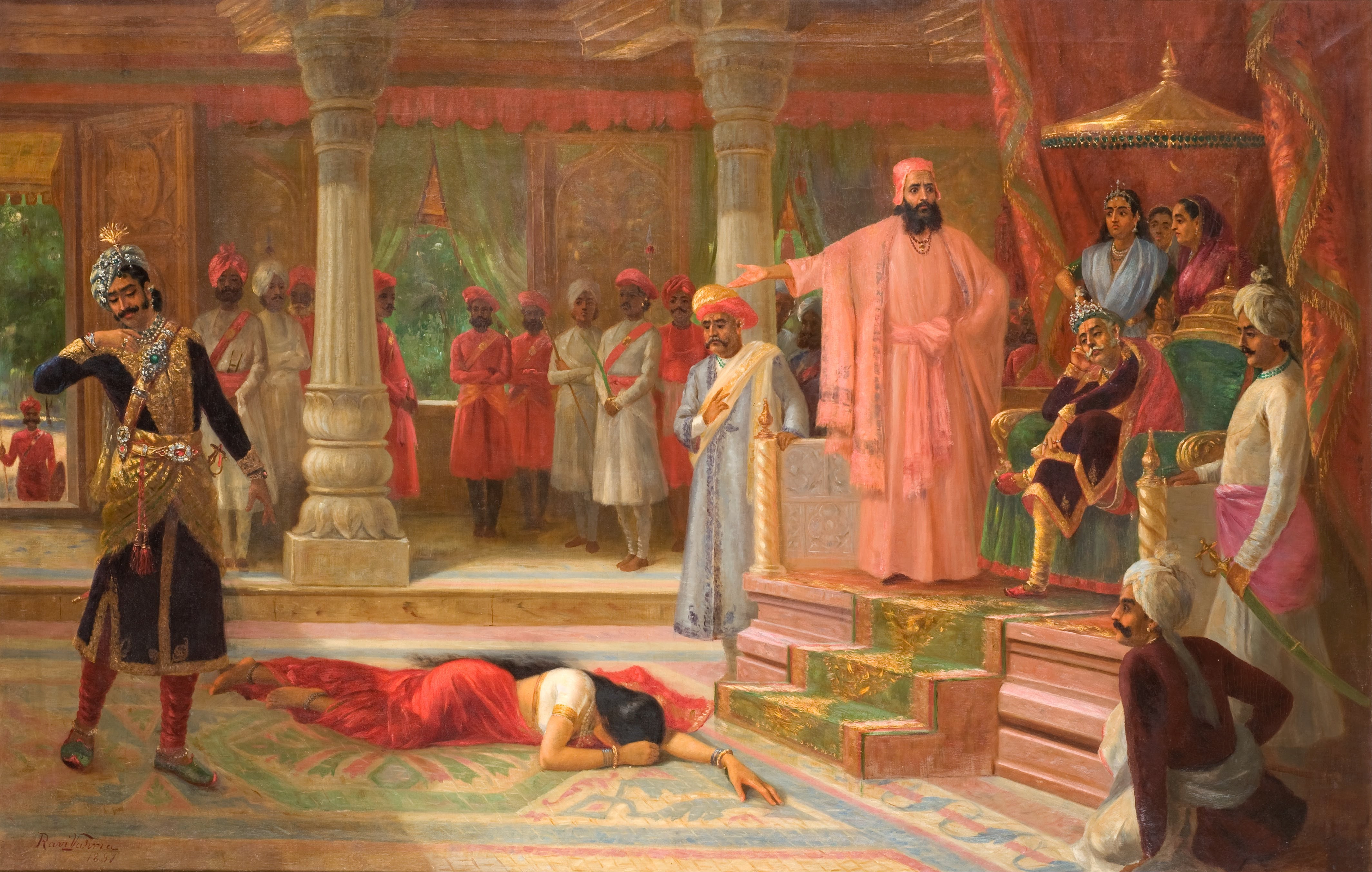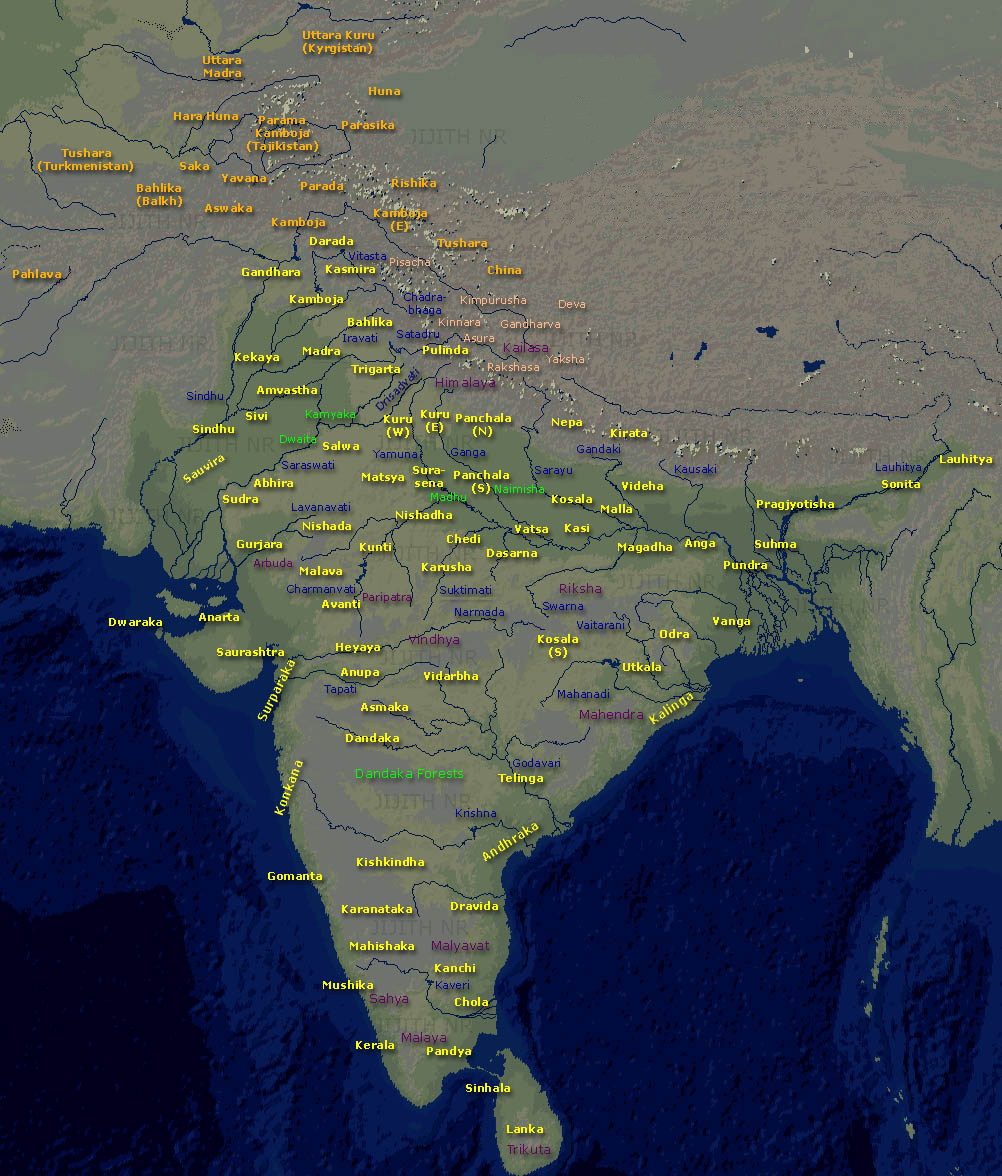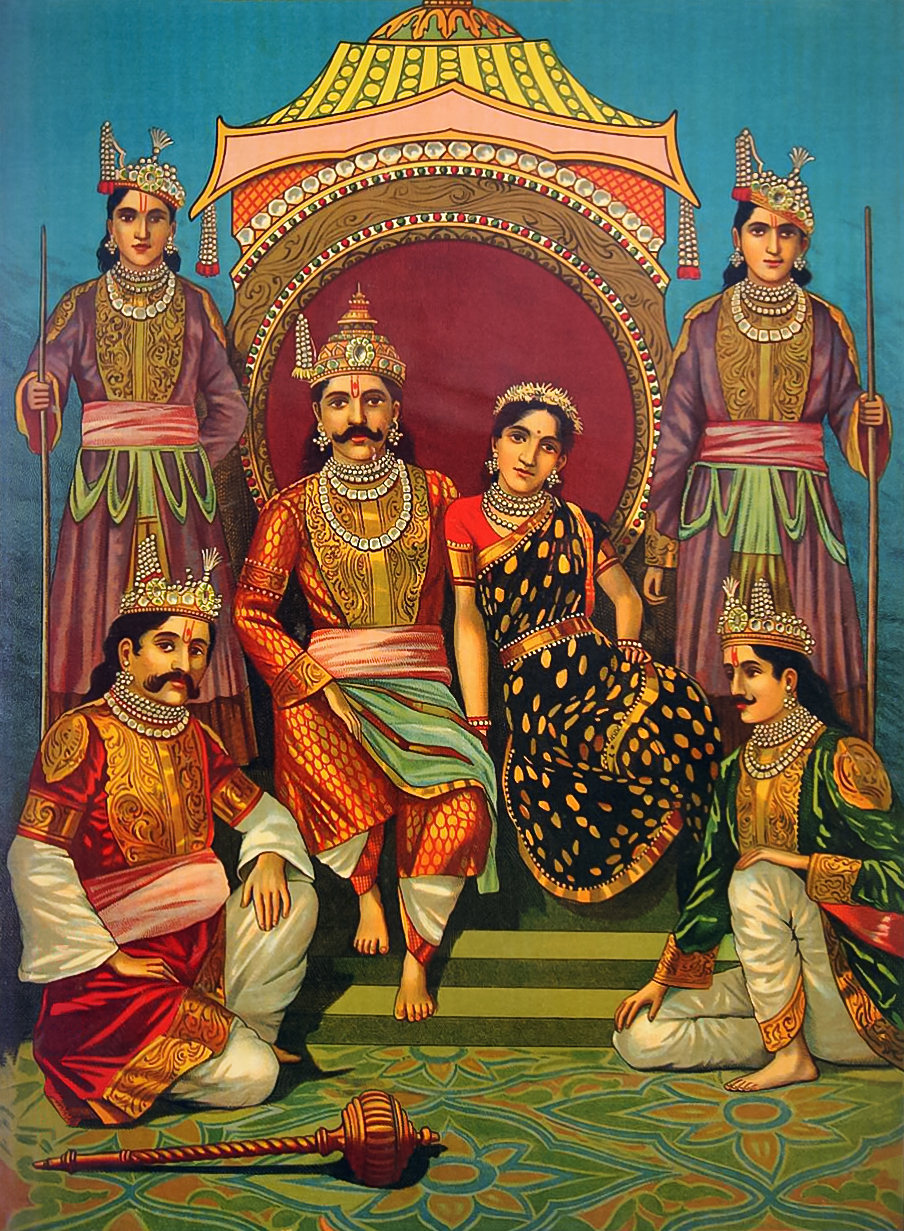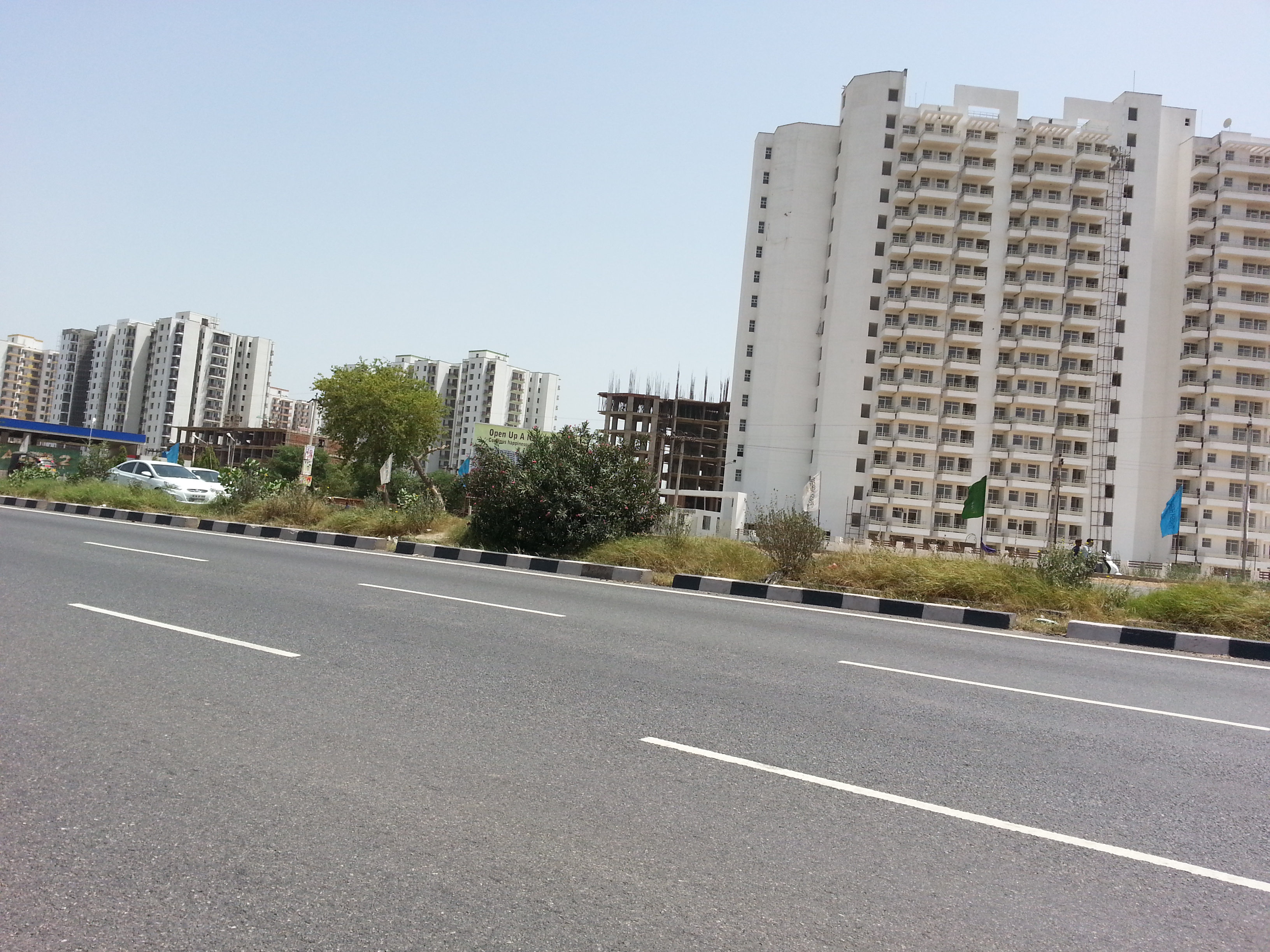|
Upaplavya
Upaplavya was a city in the Matsya Kingdom ruled by king Virata as per the epic Mahabharata. It was the city where the Pandavas camped and planned their strategy for the Kurukshetra War. The allies of the Pandavas held extensive meetings in the tents constructed at Upaplavya, and stayed there as guests of King Virata. Krishna in the Mahābhārata, Vasudeva Krishna started his famous peace mission to Hastinapura, starting his journey from Upaplavya. It took Krishna two days of travel by his chariot to reach Hastinapura from Upaplavya. The location of this city is somewhere near Viratnagar between Alwar and Jaipur in Rajasthan. References Ancient Indian cities Former populated places in India {{Hindu-myth-stub ... [...More Info...] [...Related Items...] OR: [Wikipedia] [Google] [Baidu] |
Kurukshetra War
The Kurukshetra War (), also called the Mahabharata War, is a war described in the Hindu Indian epic poetry, epic poem ''Mahabharata'', arising from a dynastic struggle between two groups of cousins, the Kauravas and the Pandavas, for the throne of Hastinapura. The war is used as the context for the dialogues of the ''Bhagavad Gita. Background The ''Mahābhārata'' is an account of the life and deeds of several generations of a ruling dynasty called the Kuru (Hindu mythology), Kuru clan. Central to the epic is an account of a war that took place between two rival families belonging to this clan. Kurukshetra (literally "Kshetram, Region of the Kurus"), also known as Dharmakshetra (the "Region of Dharma"), was the battleground on which the Kurukshetra War was fought. The first ''Mahābhārata'' says that this site was chosen because a sin committed on land was forgiven because of the land's sanctity. The events of the war make up more than a quarter of the ''Mahabharata''. The ... [...More Info...] [...Related Items...] OR: [Wikipedia] [Google] [Baidu] |
Virata
Virata (, IAST ''virāṭa'') was the King of Matsya, a prominent figure in the Indian epic ''Mahabharata'', and the titular character of the epic's fourth book, '' Virata Parva'', which recounts the Pandavas’ year of ajnatavasa—incognito exile—in his kingdom. He is best known for unknowingly sheltering the Pandavas during this period, with each of them assuming disguised roles in his court. Virata was married to Queen Sudeshna and was the father of Prince Uttara and Princess Uttarā, who married Abhimanyu, the son of Arjuna. Literary background The ''Mahabharata'', one of the Sanskrit epics from the Indian subcontinent, other being the ''Ramayana''. It mainly narrates the events and aftermath of the Kurukshetra War, a war of succession between two groups of princely cousins, the Kauravas and the Pandavas. The work is written in Classical Sanskrit and is a composite work of revisions, editing and interpolations over many centuries. The oldest parts in the survivin ... [...More Info...] [...Related Items...] OR: [Wikipedia] [Google] [Baidu] |
Krishna In The Mahābhārata
The Hindu god Krishna is a central figure in the ''Mahabharata'', an ancient Indian epic, where he serves as a key participant in its narrative of war, duty, and societal transition. Identified as the human avatar of the god Vishnu, Krishna appears in multiple roles, including counselor, warrior, diplomat, and teacher, influencing the outcomes for the Pandava, Pandavas and Kaurava, Kauravas, the epic’s rival factions. His involvement highlights themes of righteousness (''dharma'') and the shift from the Dvapara Yuga to the Kali Yuga, a period associated with moral decline in Hindu cosmology. Krishna, born to Vrishni fraction of the Yadava clan, enters the epic with a background of notable deeds, such as the killing of Kamsa and the founding of Dvārakā, Dvaraka. As a cousin to the Pandavas through his aunt Kunti, and a close associate of Arjuna, Krishna engages with the epic’s characters on both personal and strategic levels, often using diplomacy or divine intervention to s ... [...More Info...] [...Related Items...] OR: [Wikipedia] [Google] [Baidu] |
Matsya Kingdom
Matsya () was a Vedic kingdom and later became a part of sixteen Mahajanapadas, which also appears in Hindu Epic literature. The capital of Matsya was at Viratanagari (present-day Bairat, in Rajasthan) which is said to have been named after its founder king, Virata. Mention in Mahabharata Matsya kingdom was founded by king Matsya who was the twin brother of Satyavati Satyavati (, ; also spelled Satyawati) was the queen of the Kuru Kingdom in the Hindu epic ''Mahabharata''. Satyavati is married to king Shantanu of Hastinapura, and is a great-grandmother of the Pandava and Kaurava princes. She is also the m ... and who was contemporary to Bhishma. References Kingdoms in the Mahabharata {{Hindu-myth-stub ... [...More Info...] [...Related Items...] OR: [Wikipedia] [Google] [Baidu] |
Mahabharata
The ''Mahābhārata'' ( ; , , ) is one of the two major Sanskrit Indian epic poetry, epics of ancient India revered as Smriti texts in Hinduism, the other being the ''Ramayana, Rāmāyaṇa''. It narrates the events and aftermath of the Kurukshetra War, a war of succession between two groups of princely cousins, the Kauravas and the Pandava, Pāṇḍavas. It also contains Hindu philosophy, philosophical and devotional material, such as a discussion of the four "goals of life" or ''puruṣārtha'' (12.161). Among the principal works and stories in the ''Mahābhārata'' are the ''Bhagavad Gita'', the story of Damayanti, the story of Shakuntala, the story of Pururava and Urvashi, the story of Savitri and Satyavan, the story of Kacha (sage), Kacha and Devayani, the story of Rishyasringa and an Ramopakhyana, abbreviated version of the ''Rāmāyaṇa'', often considered as works in their own right. Traditionally, the authorship of the ''Mahābhārata'' is attributed to Vyasa, Vy ... [...More Info...] [...Related Items...] OR: [Wikipedia] [Google] [Baidu] |
Pandavas
The Pandavas (Sanskrit: पाण्डव, aɳɖɐʋᵊ IAST: Pāṇḍava) is a group name referring to the five legendary brothers, Yudhishtira, Bhima, Arjuna, Nakula, and Sahadeva, who are central figures of the Hindu epic ''Mahabharata''. They are acknowledged as the sons of Pandu, the King of Kuru, but were fathered by different '' Devas'' (gods) due to Pandu's cursed inability to naturally sire children. In the epic, the Pandavas married Draupadi, the princess of Panchala, and founded the city of Indraprastha after the Kuru Kingdom was split to avoid succession disputes. After the split, the other part of the kingdom was ruled by their cousins, the Kauravas. However, the Pandavas lost their kingdom to Duryodhana (eldest and king of the Kauravas) when Yudhishthira gambled it away during a game of dice. The bet Yudhishtira agreed to was that the Pandavas would hand the kingdom over to the Kauravas and go into exile for 12 followed by an year in hiding. After this ... [...More Info...] [...Related Items...] OR: [Wikipedia] [Google] [Baidu] |
Hastinapura
Hastinapur is a city in the Meerut district in the Indian States and territories of India, state of Uttar Pradesh. ''Hastinapura'' is described as the capital of the Kuru Kingdom in Hindu texts such as the ''Mahabharata'' and the Puranas; it is also mentioned in ancient Jain literature, Jain texts. Hastinapur is located on the right bank of the Ganga river. Etymology In Sanskrit, ''Hastinapura'' translates to 'the City of Elephants' from ''Hastina'' (elephant) and ''pura'' (city). Its history dates back to the period of ''Mahabharata''. It is said that the city was named after King Hasti. It is also mentioned in the ''Ramayana'', the 13th and 14th verses of which say (translated): History The early archaeological remains of the region belong to Ochre Coloured Pottery culture which was a Bronze Age culture of Ganga Yamuna doab. Around c.1200 BCE the region transformed to an Iron Age culture. The region was occupied by the Painted Grey Ware culture which corresponds to the Ved ... [...More Info...] [...Related Items...] OR: [Wikipedia] [Google] [Baidu] |
Viratnagar
Viratnagar previously known as Bairat (IAST: ) or Bairath (IAST: ) is a town in Kotputli-Behror district of Rajasthan, India. History Ancient era According to Huen Tsang, visitor to China, Tonk was under Bairath State or Viratnagar previously known as ''Bairat'' or ''Bairath''. The present-day site of Bairat corresponds to the ancient city of Virāṭanagara, which was the capital of the Iron Age Matsya kingdom (c. 1400-c. 350 BC), which was one of the ''solasa'' (sixteen) Mahajanapadas (great kingdoms) according to the 6th BCE Buddhist text ''Anguttara Nikaya''. Matsya kingdom had Kuru and Surasena mahajanapadas to its north and east respectively. Medieval era Bairat was a part of the Mauryan Empire. The ruins of the ''Bijak-ki-pahadi'' ( Bairat Temple), a Buddhist Chaitya (chapel) from the 3rd century BCE located in Bairat, are the oldest free-standing Buddhist structures in India. The town is also home to ruins of a Buddhist monastery, a wood and timber shrine, and ... [...More Info...] [...Related Items...] OR: [Wikipedia] [Google] [Baidu] |
Alwar
Alwar ( Rajasthani Pronunciation: �lʋəɾ is a city located in India's National Capital Region (NCR) and the administrative headquarters of Alwar District in the state of Rajasthan. It is located 150 km south of Delhi and 150 km north of Jaipur. Etymology There are several theories about the derivation of the name Alwar. Alexander Cunningham, the British Indian archeologist, believed that the city derived its name from the Salva tribe and was originally Salwapur, then Salwar, Halawar and eventually Alwar, According to another school it was known as Aravalpur or the city of Aravali. Some others opine that the city is named after Khanzada Alawal Khan Mewati (the Muslim Khanzada prince who wrested Alwar from Nikumbh Rajputs). A research conducted during the reign of Maharaja Jai Singh of Alwar revealed that Maharaja Alaghraj, second son of Maharaja Kakil of Amber. ruled the area in the eleventh century and his territory extended up to the present city of Alwar ... [...More Info...] [...Related Items...] OR: [Wikipedia] [Google] [Baidu] |
Jaipur
Jaipur (; , ) is the List of state and union territory capitals in India, capital and the List of cities and towns in Rajasthan, largest city of the north-western States and union territories of India, Indian state of Rajasthan. , the city had a population of 3.1 million, making it the List of cities in India by population, tenth most populous city in the country. Located from the national capital New Delhi, Jaipur is also known as the ''Pink City'' due to the dominant color scheme of its buildings in the old city. Jaipur was founded in 1727 by Sawai Jai Singh, Sawai Jai Singh II, the Kachhwaha, Kachhwaha Rajput ruler of Amer, India, Amer, after whom the city is named. It is one of the earliest planned cities of modern India, designed by Vidyadhar Bhattacharya. During the British Raj, British colonial period, the city served as the capital of Jaipur State. After Independence of India, Indian independence in 1947, Jaipur became the capital of the newly formed state of Rajas ... [...More Info...] [...Related Items...] OR: [Wikipedia] [Google] [Baidu] |
Rajasthan
Rajasthan (; Literal translation, lit. 'Land of Kings') is a States and union territories of India, state in northwestern India. It covers or 10.4 per cent of India's total geographical area. It is the List of states and union territories of India by area, largest Indian state by area and the List of states and union territories of India by population, seventh largest by population. It is on India's northwestern side, where it comprises most of the wide and inhospitable Thar Desert (also known as the Great Indian Desert) and shares a border with the Pakistani provinces of Punjab, Pakistan, Punjab to the northwest and Sindh to the west, along the Sutlej-Indus River valley. It is bordered by five other Indian states: Punjab, India, Punjab to the north; Haryana and Uttar Pradesh to the northeast; Madhya Pradesh to the southeast; and Gujarat to the southwest. Its geographical location is 23°3' to 30°12' North latitude and 69°30' to 78°17' East longitude, with the Tropic of Can ... [...More Info...] [...Related Items...] OR: [Wikipedia] [Google] [Baidu] |
Ancient Indian Cities
This is a list of cities in South Asia thought to have been founded before the 8th century (before the rise of the Pala Empire). ''In alphabetical order'' *Amaravati *Anga (modern day Bhagalpur) *Bharuch * Ayadhya (modern day kanyakumari) *Badayun * Banbhore (now in Pakistan) *Barbarikon (now in Pakistan) *Bayana *Bhattiprolu *Bhinmal * Bhokardan ( Bhogavardhana) * Sisupalgarh (modern day Bhubaneswar) *Chandraketugarh *Chennai * Chunar *Chidambaram *Chirand *Coimbatore *Cuddalore *Cuttack *Debal (now in Pakistan) * Dhanyakataka *Dharmapuri *Dwarka *Erode * Garthapuri (modern day Guntur / గుంటూరు) *Gwalior *Hampi *Hansi *Harappa (Now in Pakistan) *Jabalpur *Jaipur *Jhansi *Junagadh *Kalibangan *Kalinjar *Kalpi *Kalyan *Kanchipuram *Kannauj *Karur * Kaveripoompattinam *Keezhadi * Kodumanal *Kollam (Quilon) * Kotivarsha ( Devkot) *Kumbakonam * Kumbhoj *Kurukshetra *Lothal *Lashkar *Madurai *Meluhha (now in Pakistan) *Mohenjo-Daro (Now in Pakistan) *Mahabalipuram *M ... [...More Info...] [...Related Items...] OR: [Wikipedia] [Google] [Baidu] |









